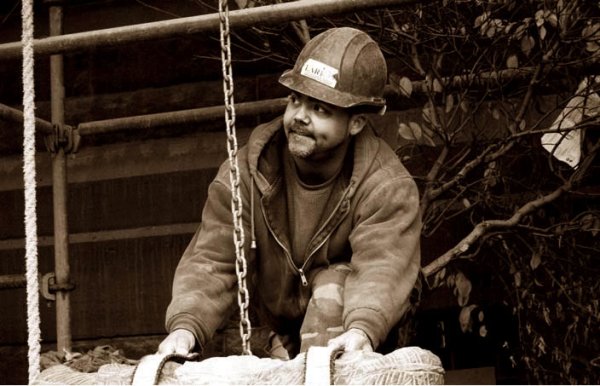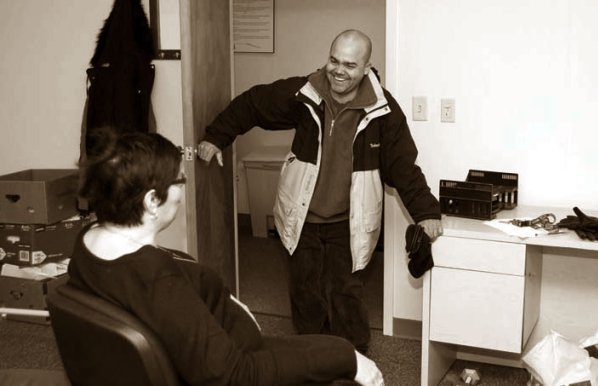"Americans love locking people up," says Ann Graham, the founder and onetime director of a program for former prisoners called Prodigal Sons and Daughters. The United States is home to less than 5 percent of the world’s population, but it has more than 23 percent of the world’s prisoners. About 2 million people are locked up nationwide; the State of New York alone incarcerates about sixty thousand.
But only a small percentage of these prisoners are locked up for life. Each year, around twenty-five thousand people are released from New York state prisons, and twenty-five hundred of these return to Monroe County, where Rochester’s Prodigal Sons and Daughters is based.
Unfortunately, most of those released from prison soon find themselves back behind bars. Those of us who have never been in prison and aren’t close to anyone who has may imagine that a person goes to prison, pays his debt to society, and then just starts over. That rarely happens. High recidivism rates—about 30 percent in the first year after release and 60 percent by the third year—have led to the establishment of hundreds of reentry task forces throughout the country. Monroe County’s Reentry Task Force is a joint project of the state correctional department, the county executive, and the Catholic Family Center of Rochester. It was set up in 2006 to study the causes of recidivism. Prodigal Sons and Daughters, its direct-service arm, now works with about four hundred former inmates a year, focusing on those who score at least seven on the New York Department of Correctional Services’ ten-point scale of risk for recidivism.
Alex scores high on that scale. He was arrested for shoplifting when he was fourteen. A few years later, he was selling drugs: “It was nickel-and-dime stuff. I wasn’t a kingpin or anything like that. I was just trying to survive. I sold mostly heroin, marijuana, cocaine.” He had been introduced to the trade when he was only six years old: a family friend who was a drug dealer had him stamp names on small cellophane bags of heroin. “I wasn’t allowed in the room with the heroin, but that was my contribution.” First incarcerated when he was sixteen, he was soon locked up again for possession and distribution of illegal drugs. He has been arrested more times than he can remember.

His life as a dealer quickly got him involved in the drug use and violence that shadow the trade—both important risk indicators for recidivism. He used “pretty much everything except crack and cocaine.” He and four associates were charged with a murder when he was twenty-three. “I was hanging out with some bad people,” he says. “I was around when someone was seriously injured. They lost their life. I didn’t pull any trigger or commit the crime, but I was around when it took place. I didn’t do anything to try to stop it. I was held accountable.” He pled guilty to first-degree manslaughter and was sentenced to eight-and-a-half to twenty-five years. He ended up serving thirteen.
Alex tried to change his ways while in prison: he stayed out of trouble, earned a GED, and worked several jobs. In fact, he had begun to reassess his situation even before he landed in prison. “I wasn’t doing good as a drug dealer anymore because I gained a conscience,” he says. He attributes his initial change of heart to the birth of his daughter. “I wouldn’t sell to anybody who came with children, anybody pregnant, anybody whose relatives I knew. And you can’t make it as a drug dealer if you pick and choose who you’re gonna sell drugs to.” Incarceration lent new urgency to this self-examination. “My stay in prison made me open up my eyes. When I was dealing, the little I did obtain I used to help other people who were close to me. No matter how much good I was trying to do, I was still doing more damage to the community. In prison, I realized it’s not gonna kill me to work legitimate. People do it every day. I thought in order to make a change, I’d better make it now. If I can do it here, then when I get out it shouldn’t be so hard.”
But it was hard. Like most ex-offenders, Alex came out of prison no better equipped for a life without crime than when he went in. He was given a bus ticket and dropped off at the station. “They gave me $40 and said goodbye. All I had were the clothes I was wearing and some clothes people sent me. That’s all.” He also left prison with thousands of dollars in child-support debt (which accrues even during incarceration), no driver’s license, few marketable skills, and the burden of a felony conviction. His predicament was not unusual. “There are just so many challenges, it’s hard to say what priority is first,” says Keenan Allen, Rochester’s representative on the Monroe County Reentry Task Force. “Folks come out without any credentials, no ID.... They may need a job. They may need time to reacclimate. Sometimes people come back and they’re not welcome in their own home, or that home may be toxic to them and may be part of why they ended up where they did.” The majority of newly released prisoners return to their communities’ poorest neighborhoods, where there are few services available to them. “They’re often uneducated,” says Craig Waleed, a senior case manager at Prodigal Sons and Daughters. “The streets are all they know how to navigate. They may have histories of addiction.... They’re almost destined to repeat.”
When he was released at the age of thirty-seven on July 29, 2008, Alex found himself in a whole new world. “I didn’t know how to use a computer, didn’t know how to use a cell phone. It was like a culture shock. Everything’s moving faster than you’re used to. It wasn’t easy.” He has not been rearrested since. He bristles when I suggest that, according to the statistics, he should be back in prison. “It’s not an option for me to go back to prison,” he says, “I’ll work five jobs if I have to.” But Alex concedes that staying out of prison would have been much harder without a program like Prodigal Sons and Daughters. “On a scale of 1 to 10, it would be a 7. At least.”

Some, like Alex, first find out about Prodigal Sons and Daughters after prison, but the organization also runs a sixty-bed unit for high-risk cases in the Orleans Correctional Facility, where staff members counsel prisoners for several months prior to their release. “A lot of what I do is rapport-building,” says Ann Abraham, one of the case managers. “They’re not the most trusting people in the world. To build trust, you have to be consistent. I go in every Tuesday. I know their names. I’m upfront with them about what I can and can’t do.” Abraham makes sure that once they’re released from prison the people she works with have a place to stay and plenty of information about the program. If they’re addicts, she also makes sure they’re enrolled in a substance-abuse program.
Convincing employers to take a chance on former prisoners can be the hardest part of reentry, so case managers must also build a good rapport with receiving communities. Soon after his release, Alex began attending Providing Real Incentives to Maintaining Employment (PRIME), a Rochester program designed to get people ready for employment. “We lump everyone together—ex-offenders, dropouts, someone just looking for a job,” says Allen, who designed the program. “We don’t look at the history. We look at what they need to be employable.”
Alex soon found his way to the Bricklayers and Allied Craftworkers Union, which works closely with Allen to select people for apprenticeships. “A lot of these ex-offenders are older guys looking for another chance,” says Gene Caccamise, president of the union. “I don’t know what the guy did and I don’t want to know. They have to follow the rules and regulations, change their attitude, and show talent. Contractors don’t see black or white, only green. They want to know: Can you make me money? If so, then you’ll be hired back.” It takes four years to finish the masonry training program. So far, of the fifty PRIME candidates who began the program, thirty-four have stayed on and most have found employment. The PRIME apprentices who are former prisoners have gained the trust and admiration of their instructors and other apprentices. “Some of my best students came through the reentry program,” says instructor Mike Markowski.
After employment, housing may be the second most difficult problem for those leaving prison. Reentry programs are constantly battling neighborhood associations that don’t want ex-offenders around. These associations know released prisoners have to go somewhere; they’d just prefer they went somewhere else. Last year Prodigal Sons and Daughters hosted a breakfast for city landlords and found about twenty who were willing to rent to men and women in the program. Prodigal Sons and Daughters will often pay the security deposit and the first month’s rent. After that, those who participate in the programs are usually responsible for paying their own rent. Renting to a former prisoner always means taking a risk, but in Rochester, at least, it’s a risk that many landlords have been willing to take. One landlord (who asked not to be identified for fear of upsetting his neighbors) rents to people from Prodigal Sons and Daughters and has found that having ex-offenders in a building can have unexpected benefits. “We got a couple of guys here now from the program and they watch over the buildings,” he says. “They call me whenever they see something.”
The recidivism rate for people who have participated in Monroe County’s reentry program was about 11 percent in 2009—about a third as high as the national average. But the program is also successful in ways that are harder to measure. Prodigal Sons and Daughters has become a surrogate family for many of the people it works with. On most days, there are about a dozen former prisoners volunteering or just hanging out at the program’s offices. Alex is among the most regular. “I refuse to sit back and do nothing,” he says. “That time I could take and do nothing, I could be doing something to help somebody else.” As hard and important as their work is, the staff members of Prodigal Sons and Daughters know that the harder job belongs to the men and women they serve. “No matter how much opportunity you give them, if a client’s not committed to changing, the program won’t work for them,” says Craig Waleed. “We pave the road, but the guy has to be committed to walking it.”
Photos by Joseph Sorrentino
Related: Cruel & Unusual, by Lance Hannon & Robert DeFina
The God of Ambition, by Chandra Bozelko
